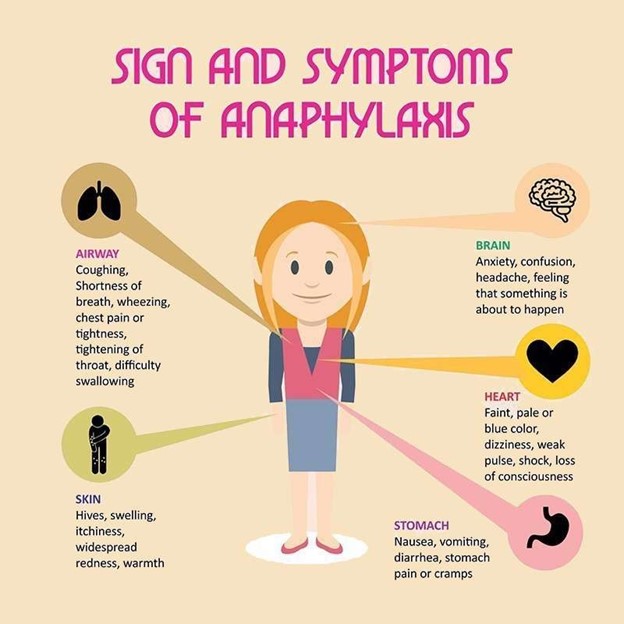A nurse is assessing a client who is receiving penicillin IV.
For which of the following findings should the nurse report to the provider as a manifestation of anaphylaxis?
Hypertonia.
Wheezing.
Urinary retention.
Increased blood pressure.
The Correct Answer is B
Anaphylaxis is a severe, potentially life-threatening allergic reaction that can occur within seconds or minutes of exposure to an allergen, such as penicillin.

One of the symptoms of anaphylaxis is wheezing, which is caused by the constriction of the airways and a swollen tongue or throat.
Choice A is wrong because hypertonia (increased muscle tone) is not a known symptom of anaphylaxis.
Choice C is wrong because urinary retention (inability to completely empty the bladder) is not a known symptom of anaphylaxis.
Choice D is wrong because increased blood pressure is not a known symptom of anaphylaxis; in fact, anaphylaxis can cause a sudden drop in blood pressure.
Nursing Test Bank
Naxlex Comprehensive Predictor Exams
Related Questions
Correct Answer is C
Explanation
First, convert the client’s weight from pounds to kilograms: 121 lb /.2 = 55 kg. Then, calculate the dose in mg: 1 mg/kg * 55 kg = 55 mg.
Finally, use the ratio of available enoxaparin to calculate the volume to administer: (55 mg / 60 mg) * 0.6 mL = 0.55 mL.
Rounded to the nearest tenth, this is 0.6 mL.
Choice A is wrong because it is less than the calculated dose of 0.6 mL.
Choice B is wrong because it is equal to the calculated dose of 0.6 mL but not rounded to the nearest tenth.
Choice D is wrong because it is greater than the calculated dose of 0.6 mL.
Correct Answer is A
Explanation
Dopamine is a medication used to treat hypotension, low cardiac output, and poor perfusion of vital organs.
It is used to increase mean arterial pressure in septic shock patients who remain hypotensive after adequate volume expansion 1.
If the client is still experiencing hypotension while receiving dopamine by continuous IV infusion, the nurse should increase the rate of infusion to improve the client’s blood pressure.
Choice B is wrong because Extravasation, is not the correct answer because it refers to the leakage of IV fluid or medication into the surrounding tissue and is not an indication to increase the rate of dopamine infusion.
Choice C is wrong because Headache, is not the correct answer because it is not specifically related to dopamine therapy or an indication to increase the rate of infusion.
Choice D is wrong because Chest pain, is not the correct answer because it is not specifically related to dopamine therapy or an indication to increase the rate of infusion.
Whether you are a student looking to ace your exams or a practicing nurse seeking to enhance your expertise , our nursing education contents will empower you with the confidence and competence to make a difference in the lives of patients and become a respected leader in the healthcare field.
Visit Naxlex, invest in your future and unlock endless possibilities with our unparalleled nursing education contents today
Report Wrong Answer on the Current Question
Do you disagree with the answer? If yes, what is your expected answer? Explain.
Kindly be descriptive with the issue you are facing.
